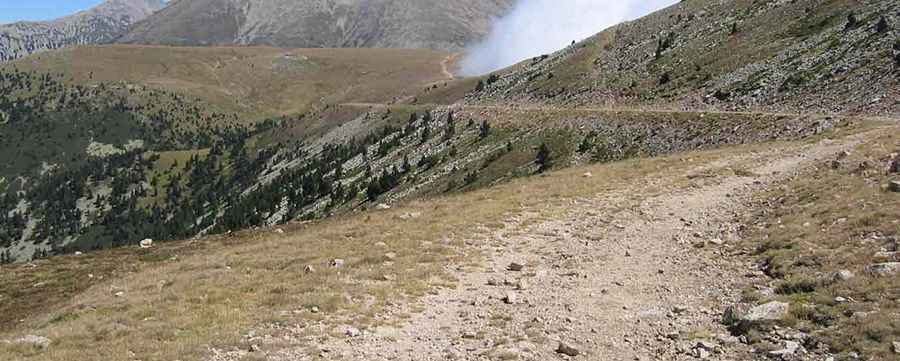Conquering the wild road to Collade des Roques Blanches
Collade des Roques Blanches is a high mountain pass at an elevation of 2,260m (7,414ft) above sea level, located in the Pyrénées-Orientales department of France.

Where is Collade des Roques Blanches?
The pass, named after a rough translation of the original Catalan “Collada del Rocas Blancas” (Pass of the white rocks), is located in the Occitania region, in the southern part of the country, within the Réserve Naturelle de Prats-de-Mollo-la-Preste, near the border with Spain and the Autonomous Community of Catalonia.
How long is the road to Collade des Roques Blanches?
The road to reach the summit is not easy. It starts asphalted from Prats-de-Mollo-la-Preste. Starting from this town, the ascent is 24.3 km (15.09 miles) long. Over this distance, the elevation gain is 1,517 meters and the average percentage is 6.2%.
How demanding is the road to Collade des Roques Blanches?
It begins gently in the village of Prats-de-Mollo-la-Preste, with gradients staying below 7% for the first quarter of the ascent. You'll soon arrive at the thermal spa of La Preste-les-Bains, the last sign of civilization before descending the other side. This is where the climb starts to demand more effort.
A challenging 4-kilometer stretch averaging over 8.5% significantly raises the intensity. The road narrows and its condition worsens as you continue toward the Col des Besses, with an additional 6 kilometers averaging around 5.5%. From here, you may want to switch bikes.
The final 6 kilometers are, as mentioned, unpaved—with sections that are unsuitable for a road bike. That’s one reason I hesitated to include this climb in the list. However, the stunning scenery throughout makes it a rewarding detour, especially for those looking to break routine and reconnect with nature. It’s just you and the landscape for a few kilometers. Along this section, you’ll climb up Coll des Molles as well.
The final segment averages 7.5%, with short bursts of 11–12% on a rough mix of dirt and loose rocks, adding to the challenge. Don’t forget the altitude—rising above 2,000 meters, the thinner air reduces oxygen intake, making the effort noticeably tougher on your legs and lungs.
Pic: http://panneauxcols.free.fr/Panneau%20du%20mois/09-2005-crb.htm